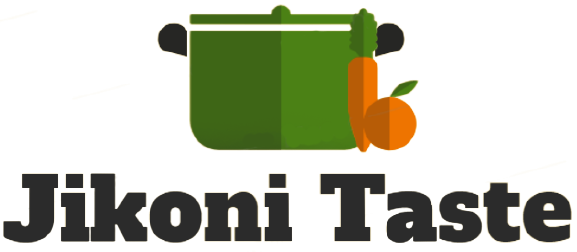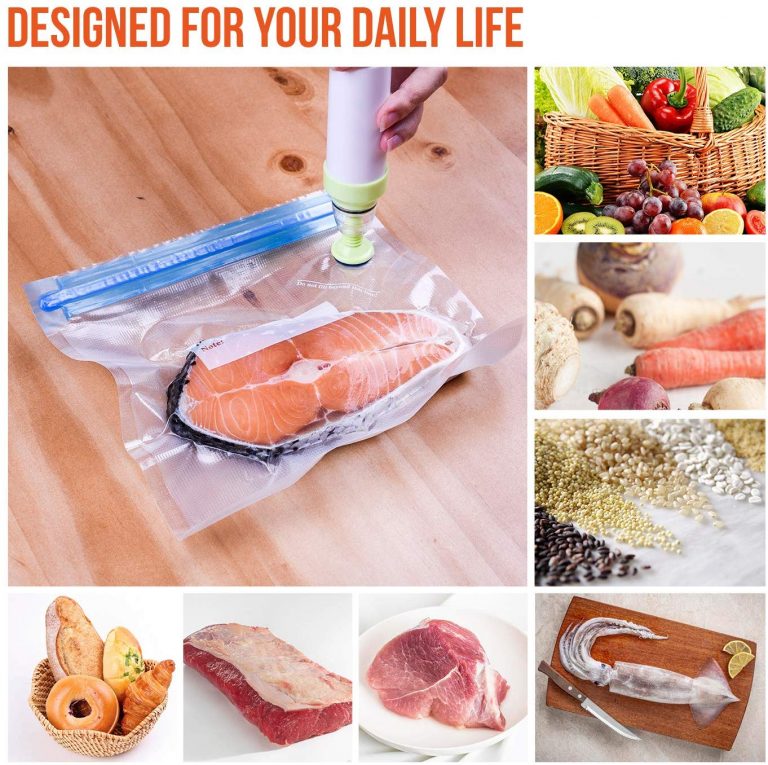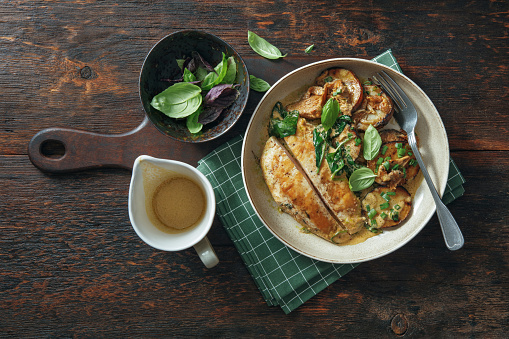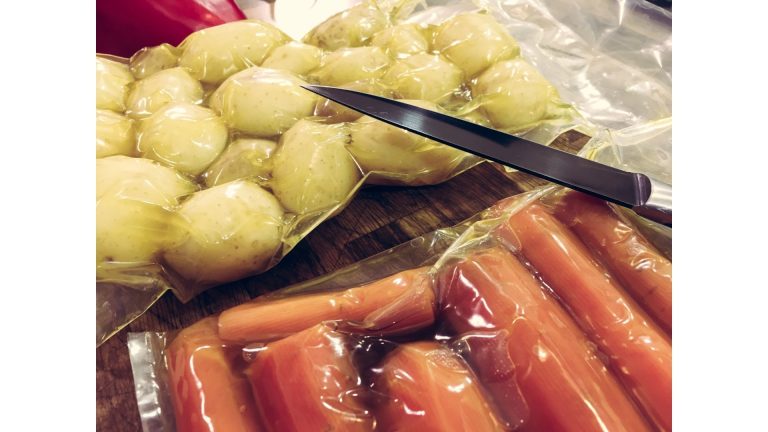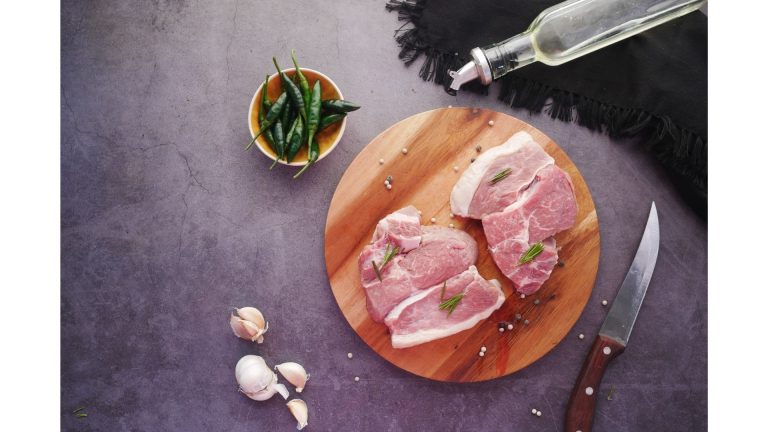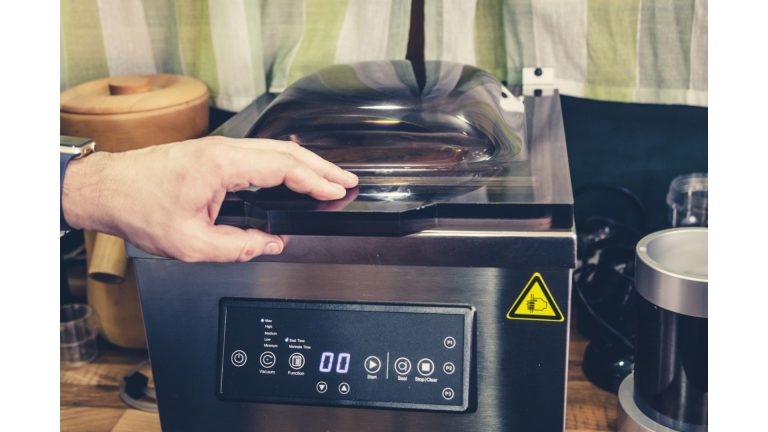What is Sous Vide Cooking?
Sous vide is the ultimate cooking technique that is used in many high-end restaurants around the world.
It delivers consistent, restaurant-quality results and can be used for cooking any kind of food, from fish and meat to vegetables and desserts.
The popularity of sous vide cooking is increasing as people become more aware of the benefits of this method of cooking.
Sous vide, which means “under vacuum” in French, is a cooking technique that produces results that are impossible to achieve through any other cooking method.
In this method, food is placed in a plastic bag and then vacuum sealed and cooked in a water bath at a constant temperature for a certain period.
The process of sealing the food in plastic bags and placing them in water is called “sous-vide”, or “under vacuum”.
The best part of this method is that it preserves the flavor of the food. By using sous vide cooking, you will get a delicious taste that is not available otherwise.
Sous vide cooking is easy as long as you follow these steps:
- If you want to cook with precision, attach your precision cooker to a pot of water and set the time and temperature according to your desired level of doneness.
- To prevent food from drying out and spoiling, place your food in a sealable plastic bag and clip it to the side of the pot.
- Season the meat and finish it in the oven or on a grill to create a crispy, golden crust.
Table of Contents
Why should I use sous vide cooking?
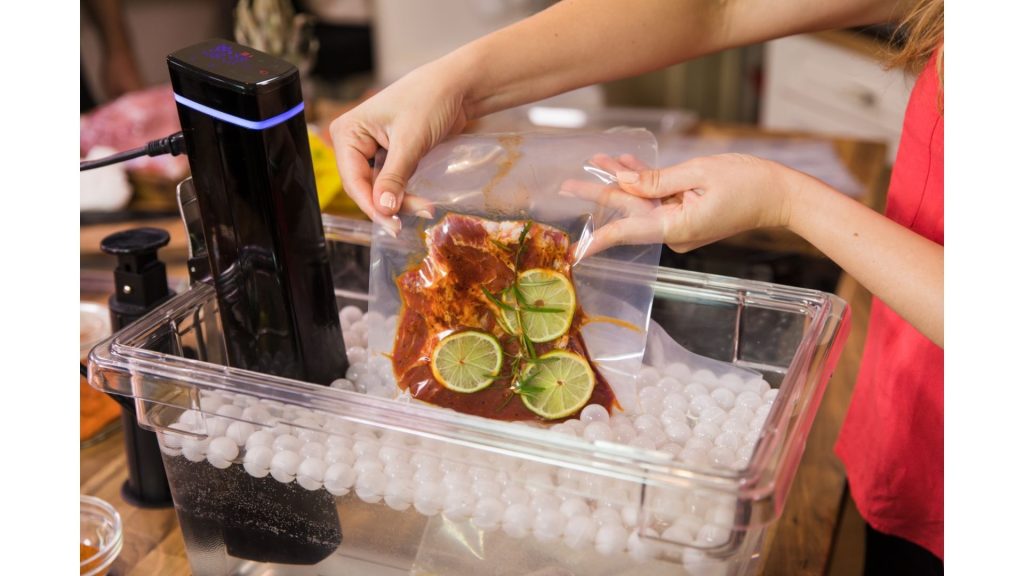
Sous vide cooking is the best way to cook food because it allows you to control the heat and temperature. This means you can cook foods perfectly every time.
If you’re going to get good at cooking, it’s going to take a lot of practice, a lot of trial and error, and patience.
You’ll constantly be learning new things and refining your skills to make sure you end up with the results you want.
The best way to store food is to keep it in the fridge, where it’s cool, dark, and out of direct sunlight.
Sous vide cooking provides many benefits, including precise temperature control, so it’s the perfect way to cook meat, poultry, fish, or vegetables.
Because you control the temperature and time for your oven, you can be confident that you will have consistent results every time.
This ensures that the food is moist, juicy, tender, and flavorful.
Traditional methods of preparing food result in wasting water. For example, on average, traditionally cooked steak loses up to 40% of its volume due to drying out.
Steak cooked via precision cooking loses none of its volumes.
It’s not easy to cook with precision. When you’re cooking, you have to be focused, and there’s no worry about overcooking.
How can you say that sous vide results are better?
Sous vide offers an unmatched level of control over the cooking process, allowing you to cook foods from edge to edge to create restaurant-quality results at home.
With this, we can say that sous vide cooking is great and gives you the best results. For better understanding, we can check this example.
Sous Vide Steak vs. Traditionally Cooked Steak
The steak that was on the left side was cooked sous vide with 129ºF. The steak on the right side was cooked with a pan.
If you look at these images you will notice that the sous vide cook cooked the steak perfectly from edge to edge while the steak cooked on the pan lost the volume and overcooked.
Sous Vide Salmon vs. Traditionally Cooked Salmon
The salmon cooked with sous vide remains pink and perfectly cooked from edge to edge. While the salmon cooked on the pan had grey edges and became overcooked.
This is because the surface temperature of the pan is higher than the actual cooking temperature required to cook a salmon. When this dries the white albumin will be expelled.
Sous Vide Eggs vs. Traditionally Cooked Eggs
When you use sous vide for cooking eggs you will get consistent results in every cook. This is because it offers precise temperatures that are required to cook an egg.
You can check this from the below image. If you look at the image on the left side you will notice that the egg is cooked perfectly and softly boiled.
While the egg on the right side looks under-cooked with liquid yolks and thick whites.
What are the different types of sous vide machines?
Types of Sous Vide Machines
Sous vide technology has been around for decades in professional kitchens around the world, but it’s always been bulky, expensive, and overloaded with complex features.
Eventually, this type of equipment made its way into high-end specialty retail shops but remained limited to chefs and consumers with extensive culinary experience.
Sous vide cooking, which is a method of cooking food in a vacuum-sealed bag or pouch in a water bath, is getting more popular and has been featured in many television shows, including Top Chef and Hell’s Kitchen. Until recently, it was only available for professional chefs.
See also: Best Sous Vide Ziplock bags
There are now many sous vide options available to the home cook. You can use them to easily create perfectly cooked food that will taste amazing!
These are the different types of sous vide machines available. Check it out.
Sous Vide Immersion Circulator
This is a great immersion circulator for beginners. It’s a standalone immersion circulator that heats water and circulates it around the pot to maintain precise temperatures evenly.
Sous vide devices work by clamping onto your kitchen’s existing pots and pans to create a water bath that circulates heat evenly throughout the entire pot. This makes it easy to cook all types of foods, from meat to vegetables, at the same temperature.
If you want to use a sous vide immersion circulator, the Anova is the best choice. Other examples include the Joule, the Nomiku, and the Sansaire.
See also: Breville Joule Sous Vide Immersion Circulator Review
Sous Vide Water Oven
Sous vide water oven is a countertop water bath. It’s a fully contained, sous vide device that’s about the size of a microwave and typically costs around $500. It heats water, but it doesn’t circulate the water.
You can use this method to cook fish or meat for the same length of time as an oven. However, this method leads to inconsistent results because the temperature of the food may fluctuate depending on the heat of the surrounding air.
Sous Vide Packaging
You can use this technique to preserve fruits and vegetables, meat, and fish. Simply place the food in a sealed bag or container, remove the air, and use a straw, vacuum sealer, or another device to seal the bag.
There are many options when it comes to vacuum sealing sous vide, but not all of them are created equal. Here are a few of the best types of sous vide packaging:
Resealable Bags or Jars
These bags are great for storing pool chemicals, and they come in different shapes and sizes so you can find one that works for you. We recommend using the sealable sous vide bags that come with the kits.
The biggest downside is that they’re not designed to be reused, but if you want to, they’re pretty easy to clean up after use.
If you prefer something a little more compact, you could also try these plastic jars. They’re inexpensive, lightweight, and easy to stack.
Reusable Silicone Bags
It’s also a lot more versatile than other bags, as it’s reusable. You can use it for everything from chicken to seafood, and it’s compatible with sous vide machines.
The silicone material is durable and strong, so it can withstand high temperatures. It’s also FDA-approved, so you don’t need to worry about any contamination.
When you’re done with the bag, you can wash it with soap and water and air dry it. That means you can reuse it for multiple meals without worrying about contaminating the food.
Vacuum Sealing Bags
These bags are easy to use. You just pull the vacuum sealer out of the box, attach the bag, and seal it up. It takes a few seconds to seal them, and they come out of the vacuum sealer super clean.
It’s also an easy way to make sure that your food stays fresh for as long as possible.
Canning Jars
Glass jar food storage is a great way to keep your food safe and fresh. You can store your food in these jars for up to a year.
Glass jars are a good choice because they have a strong seal that keeps out air and moisture. This helps preserve the quality of the food, which is why they’re used to making everything from jam to ice cream.
They also make a great container for storing leftovers, as the jar keeps the food warm and doesn’t allow it to cool down.
This type of jar is also great for freezing items that require a longer shelf life, such as meats, fish, and other foods. Just make sure you store them in the freezer before sealing them with a lid.
How do I get set up for my first sous vide cook?
If you’re new to sous vide, the best way to get started is with Anova. It’s super easy to use, and it will make sure your food cooks evenly every time.
Clip the Anova to a pot or container, fill it with water, and preheat the water to a full boil. The Anova has an internal temperature sensor that automatically switches off when the water reaches the proper temperature.
Put the food in the bag and drop it in the water bath. Clip the bag to the side of the pot and put the lid on the pot.
Our collection of recipes and sous vide guides will help you choose what to cook and when to cook it. Then you can start cooking.
FAQ
What are the downsides to cooking sous vide?
If the food you cook tastes better than anything you’ve eaten in years, you may not mind a few drawbacks.
But sous vide food tends to be more expensive because of the special equipment you need and the time it takes to heat it.
It also takes more skill to cook the temperature-controlled way, because the foods must be turned over or rotated constantly in the bag.
When should I season my meat?
The traditional method of searing your steak, or any other kind of meat, in a cast-iron skillet or on a grill is great, but it’s time-consuming and may take longer than you’d like.
An alternative to these methods is sous vide, which allows you to cook at a precise temperature for a long period.
Is it dangerous to cook with garlic sous vide?
Garlic is one of those things that is dangerous if not cooked properly and can be unsafe when improperly prepared.
To avoid this problem when cooking with sous vide, follow these easy steps:
- Wash your hands thoroughly before working with any food or ingredients.
- Use sous vide bags and seal them at the bottom so they are closed tightly like you would a vacuum-sealed bag.
- Only add the water, then close the bag as quickly as possible.
Does sous vide meat need to rest?
Sous vide doesn’t require a rest period, but it is a great technique to use with beef, lamb, pork, chicken, and other meats.
There are a few things you want to keep in mind when using sous vide. First, never put anything cold into your sous vide water bath.
That will not allow the temperature to rise. Next, never put hot food or liquid into a cold water bath.
The temperature should always be lower than the target temperature of your sous vide machine.
Conclusion
Sous Vide is a cooking technique that uses precise and accurate temperatures to get restaurant-quality results.
It’s perfect for steak, chicken, fish, vegetables, eggs, and anything else that requires perfect, even cooking.
Next time use the sous vide cooking technique and comment on the changes you noticed.

Foodie and a passionate cook, I am here to share all of what I know about cooking, kitchen, and food prepping.
Follow me for delicious and healthy recipes.
